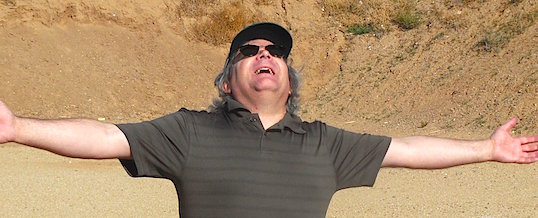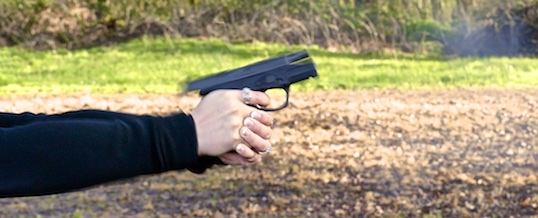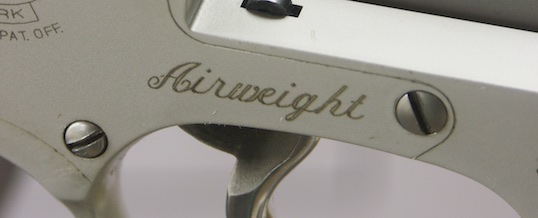
What did you change your mind about in 2015? Here’s what I did.
I’ve come to the belief that one of the most profound questions you can ask anyone who purports to be an expert in any field (to include defensive training) is “what have you changed your mind about?” This isn’t an easy question to answer, and most people you’ll ask will try to wiggle their way out of it: “well, of course the world is always changing, and I’m committed to keeping my knowledge and skills in pace with those changes, blah blah blah.”
That’s bovine excrement. If someone is really open to change, really believes in the ideal of keeping themselves abreast of current knowledge, they’ll be learning new things all of the time. That’s the root of education, and the upshot is that if someone is learning new things sooner or later that new knowledge will almost always replace or modify something which existed before. If someone is truly committed to their ongoing education they will out of necessity change their mind.
If a mind doesn’t change, has it really learned anything? If someone has changed their mind, has learned anything, they should be able to tell you how and why. Specifically, in detail. If someone ostensibly interested in growth and progress can’t tell you one thing that they’ve changed their mind about in the last year, you have to question their commitment to learning.
What do they believe or teach today that they didn’t a year ago? What don’t they believe or teach today that they did previously? Those are the details you want, not a politician’s soundbite.
I’ll give you a straight answer
Me? I’ve changed my mind about a few things in the last year (give or take a few months.) One of the more profound personal changes was my attitude toward optics on a defensive rifle. I’ve been a die-hard iron sight guy for as far back as I can remember, but as my vision changes I’ve found that those iron sights don’t work all that well any longer. Still I resisted the use of optics, thinking them too fragile, too limiting, and too battery-dependent to make a good alternative to iron sights.
It wasn’t until I identified the actual issues, did the research about those issues, and found a solution that answered my objections did I embrace optical sights. (You can read about what I found, and why I chose it, at this link.) Fragile? No, in fact modern optics are probably more durable than the iron sights they replace. Too limiting? No, it’s possible to get both close-distance speed and longer distance precision in the same optic, and at the same time deal with vision issues which affect some optical designs. Battery dependent? Not all; there are suitable sights that aren’t.
One by one my objections to optics fell away, and today my defensive rifle wears an optical sight (and surprisingly no iron sights at all.) Soon all my rifles will be so equipped!
As long as we’re talking about hardware, I had a change in attitude toward the bullpup rifle in 2015. If you’d asked me about bullpup rifles a year ago, you probably would have heard the party line: “not ergonomic”; “can’t be shot from the off shoulder”; “can’t be reloaded easily”; and so on. At the beginning of this year I realized that those sentiments were in fact not mine but the opinions of others, people who may or may not actually have any experience from which to base those opinions.
I decided to open my mind and actually try a bullpup rifle for myself. By “try” I don’t mean “shoot a few rounds at the range” — I conceived a long-term experiment to find out what the bullpup is good for, what it’s not, and if their shortcomings can be adequately addressed through proper technique and training. The result was The Bullpup Experiment, and I learned a lot of things — including that the bullpup isn’t in the aggregate good or bad, but definitely different. Some things it does better, some not as well, and some depend on how you learn to use it. In many respects I definitely changed my mind about the bullpup rifle’s application as a defensive tool.
On the other hand, I had the opposite change of mind about another piece of hardware (and its associated software.) A year ago, if you’d asked about handgun-mounted weapon lights (WMLs) I’d probably have said that they make a good adjunct to a handheld light and might even be a preferred option in some circumstances. Today, after a year of researching their use and misuse I’ve decided that they have almost zero application outside of a very few and tightly defined scenarios. This comes from knowledge I’ve gained working on a related curriculum development project this year (more about that at a future time.) I’ve been able to review a number of unintentional discharges due to confusion and/or inadvertent contralateral activity involved with WML use, as well as continual misuse of the light as a search and identification tool (even with extensive training, it seems people can’t help but point the center of the light’s beam at what they’re trying to see — particularly if they’re surprised by that something.)
That information has lead me to the conclusion that unless you have a very specific reason for the use of a WML you’re far better off with a handheld light instead. A WML on a daily carry gun? Absolutely not; there are too many downsides and no significant advantage that cannot be gained through other, more flexible, means. It’s both a training issue and a human nature problem, and I don’t think either are easily solved.
Changes in teaching, too
On the training front I’ve changed my mind about the actual material that defensive instructors need to be teaching. Thanks to the continual prodding of Claude Werner I’ve taken a harder look at the things people do when confronted with a lethal threat, considered their actual actions versus their ideal actions, and realized (as Claude has) that the shooting part of defensive shooting isn’t really difficult from a marksmanship standpoint. It’s all the other stuff — the decision making which precedes the first shot, the interchange which results when the defensive firearm is brought into play, the post-shooting behavior, and much more — that very often decides whether the defensive gun use is successful. The fact that most defensive firearms use ends when the firearm is displayed only highlights the fact that we don’t often teach people what to do with their guns other than pull the trigger.
The result is that I’m rapidly evolving how and what I teach to reflect what I see as the reality of the private sector defensive gun use. I’ve also become involved in a second curriculum development project that is going to be heavily influenced by this change of mind, to the benefit of the students who experience the training.
I’m very much looking forward to learning more in 2016 — and changing my mind again! How about you? What have you changed your mind about in the last year?
– Grant Cunningham
P.S: Photo, courtesy of Gary Smith, taken during my Threat-Centered Revolver course at Phoenix Firearms Training.
- Posted by Grant Cunningham
- On January 1, 2016



